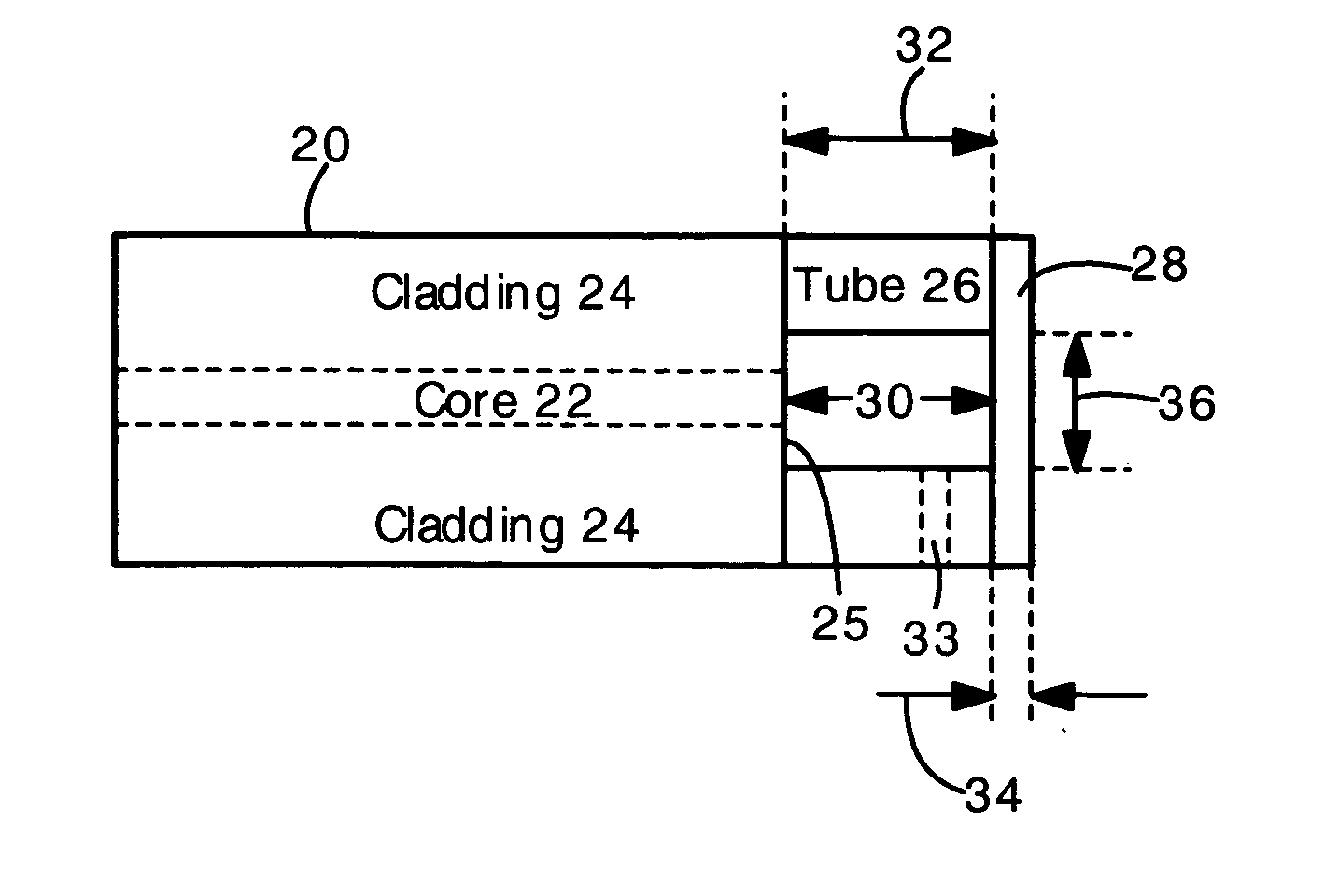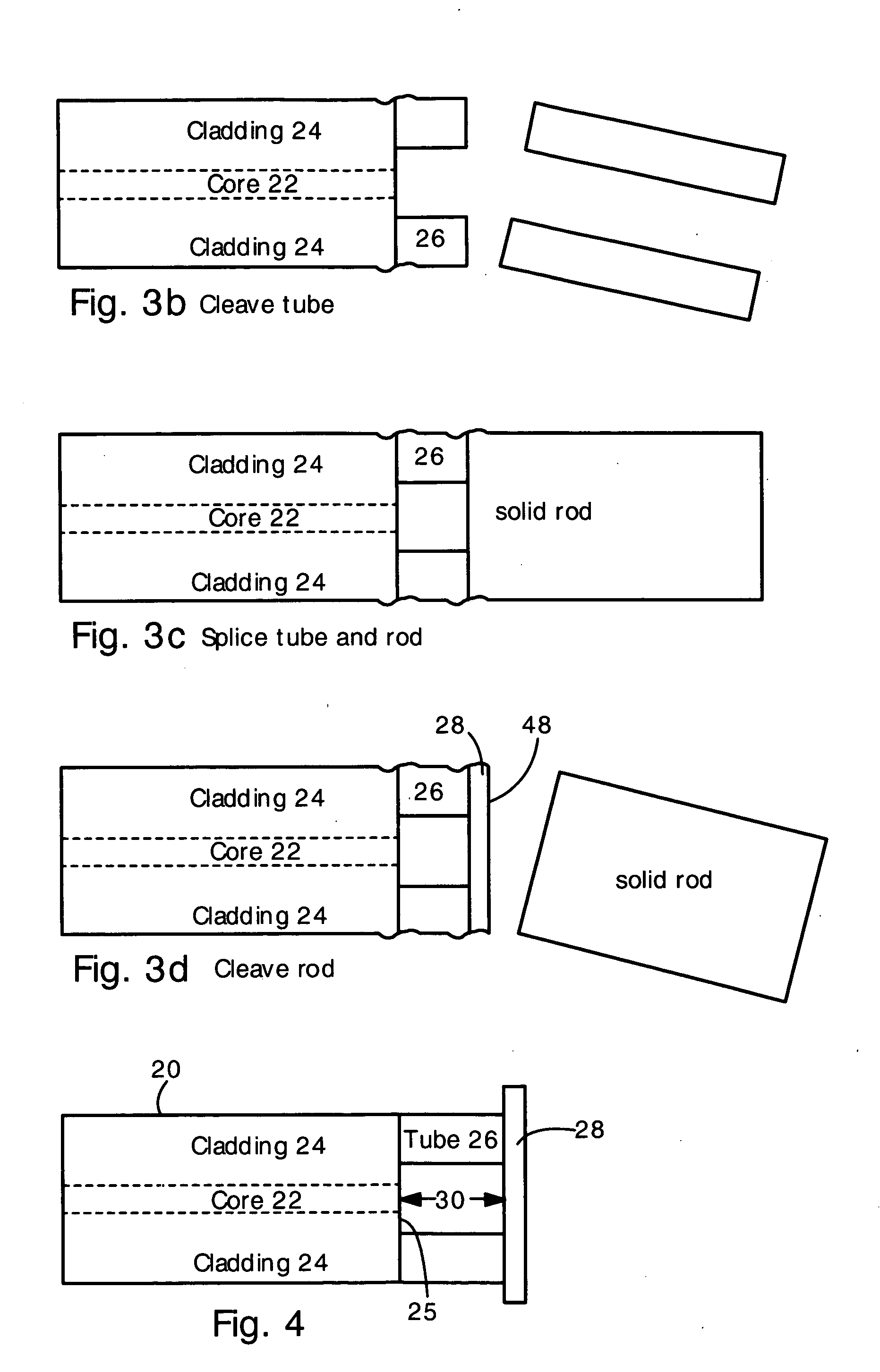Optical fiber pressure and acceleration sensor fabricated on a fiber endface
a fiber endface and fiber optic technology, applied in the direction of fluid pressure measurement, interferometer, instruments, etc., can solve the problems of severe constraints on sensor design and material composition, the pressure sensor for these locations must be very small, and the conventional fiber optic pressure sensor design is typically not suitable for extreme environments
- Summary
- Abstract
- Description
- Claims
- Application Information
AI Technical Summary
Benefits of technology
Problems solved by technology
Method used
Image
Examples
Embodiment Construction
[0023] The present invention provides an optical fiber pressure sensor having a short length of hollow tube bonded to an endface of an optical fiber. A pressure-sensitive diaphragm is bonded to the opposite end of the hollow tube. The fiber endface and diaphragm define an etalon cavity. The diaphragm flexes in response to applied pressure, impact, vibrations or acoustic waves. The flexing diaphragm varies the etalon cavity length. The etalon cavity length is normally approximately equal to the length of the hollow tube. The fiber, hollow tube, and diaphragm are preferably made of the same material (e.g. fused silica or sapphire). The fiber, hollow tube, and diaphragm can all be bonded by fusion bonding at high temperature. The hollow tube can be formed by preferentially etching the core of a fiber. In an alternative embodiment, the fiber core is preferentially etched, and the diaphragm is bonded to the unetched cladding.
[0024]FIG. 1 shows a side view of an optical fiber pressure se...
PUM
 Login to View More
Login to View More Abstract
Description
Claims
Application Information
 Login to View More
Login to View More - R&D
- Intellectual Property
- Life Sciences
- Materials
- Tech Scout
- Unparalleled Data Quality
- Higher Quality Content
- 60% Fewer Hallucinations
Browse by: Latest US Patents, China's latest patents, Technical Efficacy Thesaurus, Application Domain, Technology Topic, Popular Technical Reports.
© 2025 PatSnap. All rights reserved.Legal|Privacy policy|Modern Slavery Act Transparency Statement|Sitemap|About US| Contact US: help@patsnap.com



